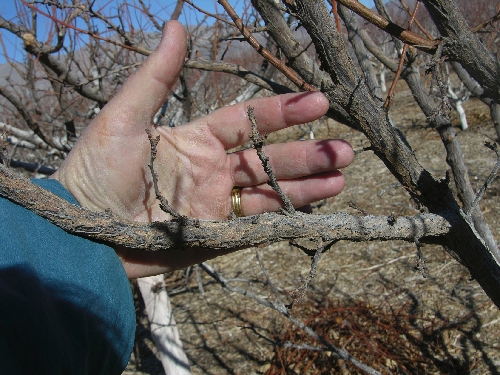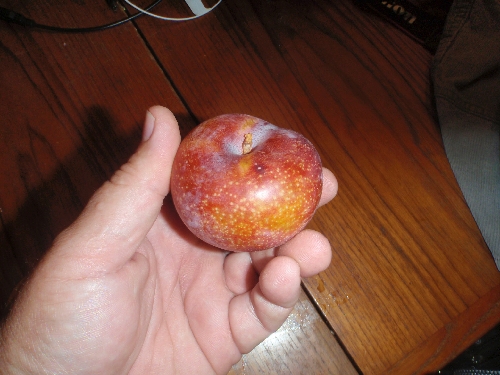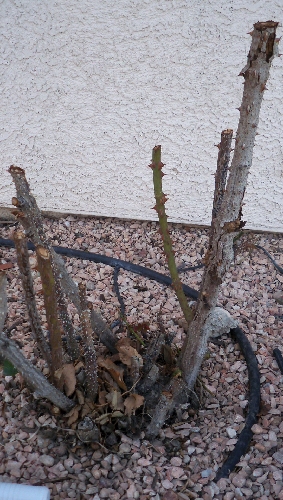Hybrid fruits often better than their parents
Saturday, I will be demonstrating how to prune apricots, plums and their relatives such as pluots, apriums and plumcots. Demonstrations will begin at 9 a.m. and in a continuing cycle until noon at the University of Nevada Cooperative Extension Master Gardener Orchard in North Las Vegas.
Different pruning classes are scheduled for every Saturday through January. You can get a calendar of classes at the orchard by Googling Xtremehorticulture of the Desert or emailing me at Extremehort@aol.com. There are no classes scheduled Dec. 24 and 31, but I will be at the orchard to answer questions and assist those of you who could not make previous classes.
If you bring your hand shears and loppers, we will make sure your tools are sharpened and adjusted. Once you learn how, officials hope you will help prune at least one tree under the mentorship of the orchard volunteers. The orchard is a learn-by-doing classroom.
Advance registration is not necessary, but orchard volunteers are asking for a $5 donation to help defray expenses. If this is a hardship for anyone, please let me know at Extremehort@aol.com.
The orchard is located just north of the Aliante development in North Las Vegas, 100 yards east of the North Decatur Boulevard and Horse Drive intersection. For specific directions, call the master gardener help line at 702-257-5555 before Saturday morning. Otherwise, call the orchard at 702-257-5532 on Saturday morning.
Come and help me with Nevada's first commercial olive harvest in Armargosa, Nev., most likely on Monday. I am recruiting volunteers to come up to the Armargosa Valley, about 90 miles north of Las Vegas, for this historic event. Participants will learn how olives are produced commercially and bottled while becoming a part of Nevada's history.
The Moltovegas farmers market, now called Bet on the Farm, is open again. It is now located at the Las Vegas Springs Preserve, 333 S. Valley View Blvd., and open on Thursdays from 10 a.m. to noon.
What are pluots, plumcots and apriums? Technically they are called "interspecific hybrids." Let's break that down. Most people know what hybrids are. They know them as a new class of vehicles. These vehicles are a cross between a traditional gasoline or petroleum-fueled engine and one that gets its power from a source of energy other than petroleum such as electricity.
Hybrids occur in plants. These can be crosses that occur naturally or selectively done by hand by plant breeders. When we take two plants that don't normally breed with each other we can get a new generation, some of which are superior to the parent plants. These superior traits can be in the how they grow, how they look or how or what they produce. We say these superior offspring have "hybrid vigor."
Most crosses found in nature occur between plants of the same species. So it can be fairly common to see a plum cross with another plum. The seed or offspring will have traits from both plum parents. But if a plum crosses with a plant like an apricot, a different species, then it is called an "interspecific" cross . This rarely happens in nature.
Floyd Zaiger, a plant breeder and founder of Zaiger Genetics in Modesto, Calif., is one of a few pioneers in plant breeding involving fruit trees. He was responsible, by creating interspecific crosses between apricots, plums, peaches and nectarines, to create fruits never before seen on the planet. These fruits include what we now call pluot, aprium, plumcot, nectaplum, peacotum and others.
According to Zaiger, out of about 5,000 crosses that he must do by hand, perhaps one of these crosses will be accepted for marketing as a new type of fruit tree. Their common name usually tells you what was used in the cross: plum, apricot, nectarine or peach. We can thank people like Floyd Zaiger for giving us these new, wonderful fruits to enjoy. Many do very well in our hot, dry desert.
Q: I haven't pruned my roses back yet because there are still blooms. Should I wait awhile?
How far back should I trim them, one-third or one-half? I have two favorite bushes that are 4-5 feet tall with very thick canes. How severely should these be cut back?
A: You could wait a bit on the roses, if you want. Wait until total leaf drop and then prune. If they do not drop their leaves, then pull the leaves off sometime in late December or very early January and do your pruning.
Depending on how warm the microclimate is in your yard, try to prune before you see any new growth early in 2012. This could be a bit tricky because in warm microclimates they might hold their blooms and leaves or continue blooming well into December and even January.
I would not wait past the first or possibly second week of January to get it done. If there are still flowers and leaves, harvest and enjoy them inside. Most garden roses have some scent to them, unlike greenhouse roses.
Make sure this strong growth is not coming from the rootstock. This is frequently the case on homeowner's roses. The top of the plant dies back and they see this very vigorous growth coming from the base of the plant and often growing straight up. The dead growth is removed and the strong growth is permitted to remain. This is growth from the rootstock.
You should still have a bud union (look for a "dogleg") on the stem coming from the ground. If this bud union was lost (the rootstock grew and replaced or overpowered the top of the plant), then replace the plant.
The homeowner sees this strong growth and thinks "Wow, I am going to preserve this cane because it is doing so well!" The rose used for the rootstock will also produce flowers so there is even less incentive to cut it off. You can leave it on but it will have inferior blooms to hybridized roses and very vigorous growth that is harder to control.
How far to cut them back depends on the vigor of the plant, the type of rose and where you want to see the flowers produced. If you think the plant does not have the rootstock taking over, then cut back about 2 feet below where you want your flowers produced. You may have to modify this if the canes are enormous.
Select four to five major canes growing outward in different directions that you want to keep and remove the rest, making clean, fresh cuts. Sharpen and sanitize your pruners before pruning. The local Rosarians usually have a rose pruning class in January so I will keep you posted as soon as I hear of one.
Bob Morris is a horticulture expert living in Las Vegas. Visit his blog at xtremehorticulture.blogspot.com.






























